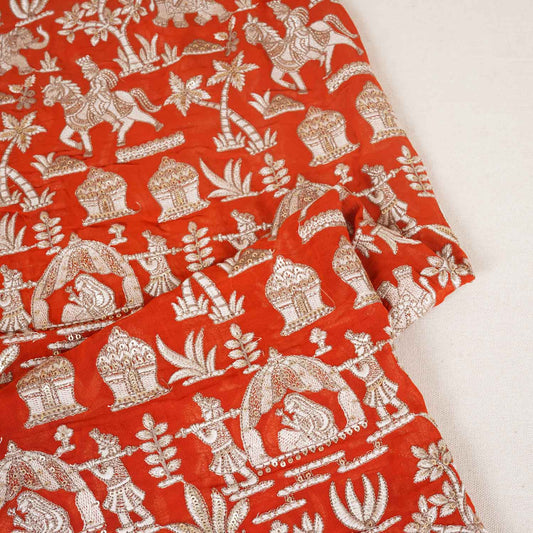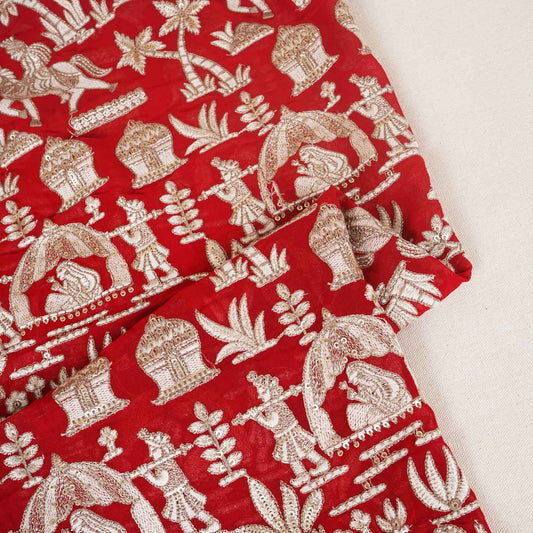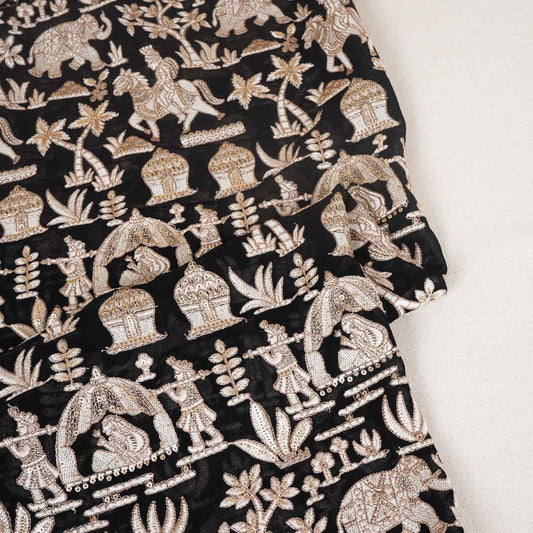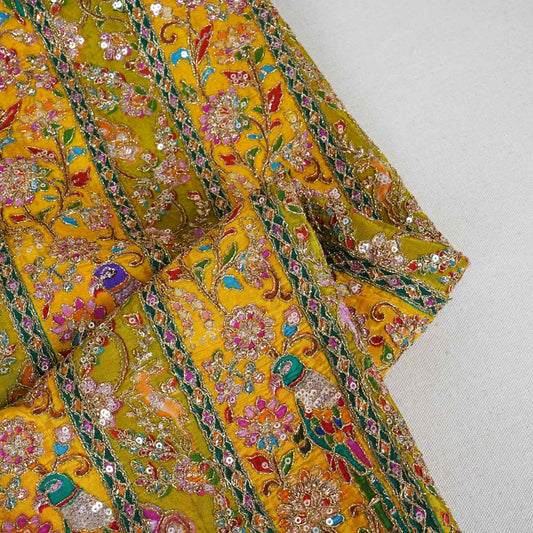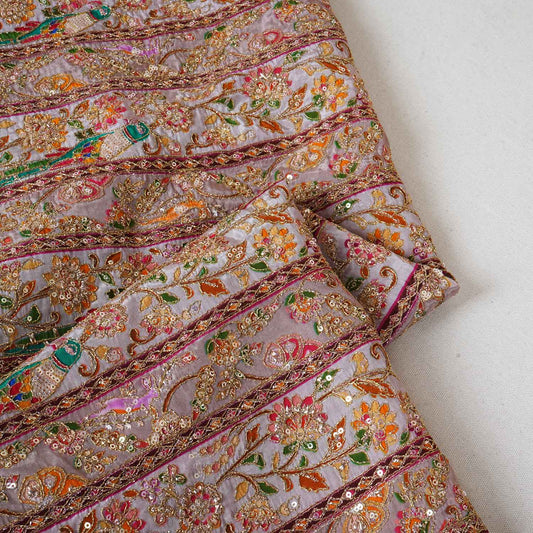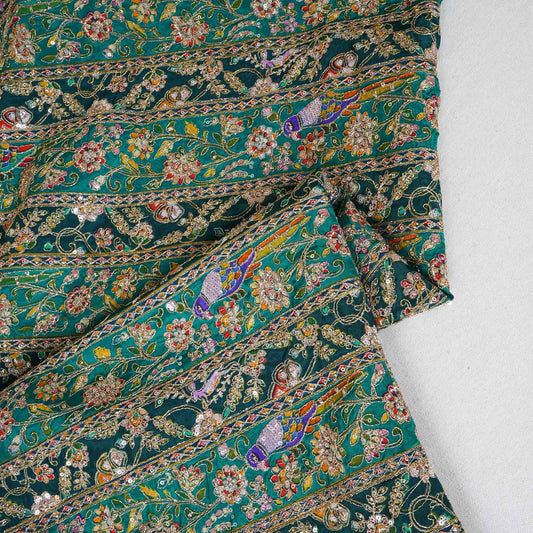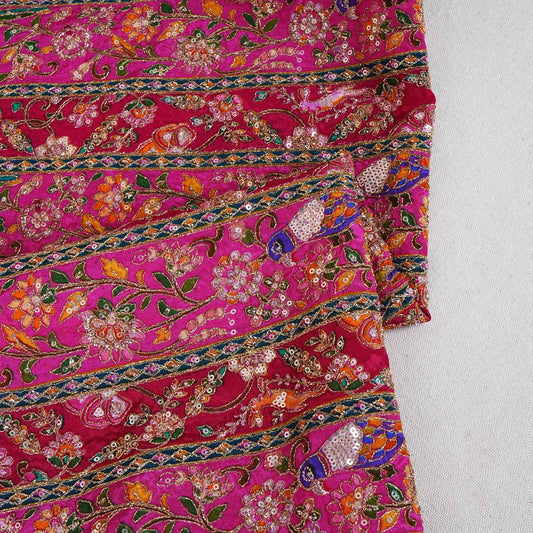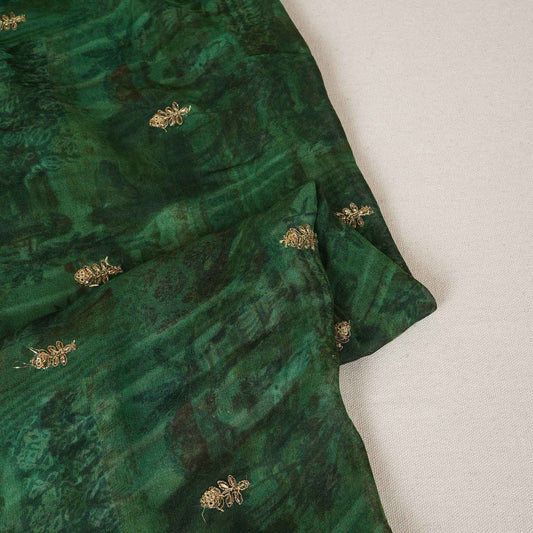Embroidery is a timeless craft that is an integral product of our material culture. It's an art fabric using, and applying different kinds of decorative a needle, Motifs are made from threads, and fabric could be embellished with beads, sequins, pearls, wires, etc.
Origin of Embroidery
Decorating fabrics with embroidery first emerged out of practicality to repair and reinforce worn clothing. In ancient times, garments were expensive to produce, so people seldom discarded them. Instead, holes or tears in clothing would be mended using colourful threads in simple stitches. Over time, this repair work evolved into more aesthetic, artistic embellishments.
Archaeologists uncovered some of the earliest known embroidery fragments in 1964 near Kyiv in Russia, estimated to date back about 30,000 years BCE. These hand-worked designs in that frigid climate would have enhanced insulation in clothing as well. Throughout the Bronze Age across Ancient Eurasia, decorative needlework flourished as a signifier of status and wealth.
Embroidery continued gaining traction through the Middle Ages and Renaissance periods across Europe as the aristocracy had clothing lavished with ornate embroideries done with silk threads and even adorned with beads, pearls and gemstones. Formal schools of embroidery sprung up in mediaeval England and France to teach young ladies this coveted decorative skill.
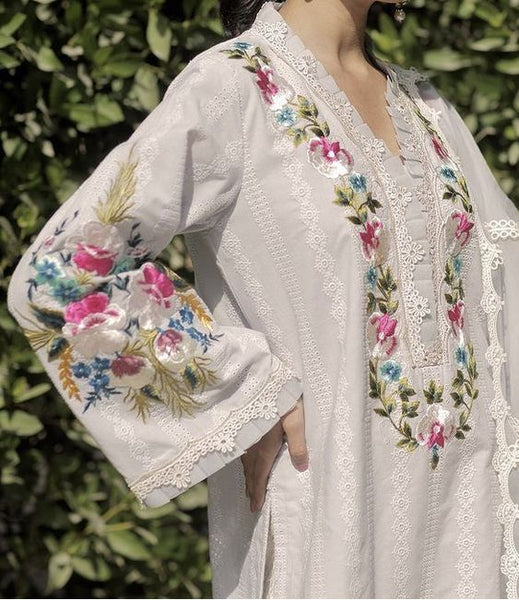
Meanwhile, India cultivated its own rich embroidery traditions that blossomed during the Mughal Empire's rule from the 16th to 18th century. The famous Aari or hook style of work originated as a means to decorate leatherware, wall hangings, tents and the ornate garments of regal families with fine floral and geometric motifs. This artistry increased demand for Indian embroidered fabrics exported abroad. British colonisation accelerated the global trade in traditional Indian embroidery.
Yet machine mass production led to major shake-ups in the embroidery industry following the Industrial Revolutions of the late 1700s. Factories in France harnessed modern technology to generate cheaper embroidered lace trims and flourishes, threatening the livelihoods of skilled artisans across Europe. Nevertheless, hand embroidery persists worldwide as an integral part of many cultural identities and heritage connected to traditional women's craftwork. Many communities still practise long-standing regional folk embroidery styles passed down through generations.
Evolution of embroidery techniques and styles
Embroidery techniques evolved from basic stitches like running stitch, cross stitch and stem stitch done on fabric grounds using colourful threads. The history of embroidery changes as civilisations advanced, new techniques developed, improving intricacy - the Assyrians introduced laidwork, ancient Chinese popularised kesi, while kantha quilting originated in India.
Silk and metallic threads enabled more embellishment in Medieval and Renaissance Europe, where techniques like underside couching and needle painting were devised, advancing dimensional designs.
The invention of the tambour hook enabled faster chain stitch techniques, while machine technology automated embroidery by the 1800s. Today, digital customisation and computerised sewing advance efficiency and creativity. Embroidery continues progressing as both technology and artisanship uncover new ways to stitch ornamental designs interpreted through the lens of contemporary aesthetics.

Types of Embroidery
- Hand embroidery - Decorative stitching is done by hand, allowing close creative control for embellishing garments, linens, and artefacts.
- Machine embroidery - Computerised machines mass produce refined designs digitised onto products like caps and uniforms.
- Crewel embroidery - Floral or geometric designs outlined and filled on double layers of fabric using fine crewel wool threads.
- Lace embroidery - Transforming fabric into delicate lacy patterns through meticulous manipulation of threaded stitches.
- Cross stitch embroidery - Folk art technique of x-shaped crosses building graphic patterns originally on canvas or linen.
- Kantha embroidery - Vintage Indian style with running stitches quilting lightweight fabrics into blankets or garments.
- Embroidery on knits - Playful modern approach using stretchy knit fabric grounds for dimensional embroidery accents.

- Goldwork embroidery - Opulent historical style incorporating metal-wrapped threads, spangles, wires and plates on apparel.
- Bead embroidery – Colourful beads are added as accents to these embroidery types with patterns and motifs for sparkling dimensional effects.
- Ribbon embroidery – Shimmery textured ribbons woven into designs during stitching add flash and dimension.
- Applique Embroidery- Involves stitching one piece of fabric onto another for ornamentation. Common in crafting quilts, clothing, banners and folk art forms.
- Satin Stitch Embroidery - Satin stitches utilise dense zigzag patterns to cover designs with smoothly filled blocks of colour and luxurious sheen. Often used for intricately filled patterns.
- Embroidery on Clothing and Accessories - Creative embroidery elevates ordinary items from hats to shoes and jackets to purses into wearable art. Hand or machine embroidery adds visual interest and personalisation using initials, names, and custom motifs.
- Digital Embroidery - Specialised computer-controlled embroidery machines mass-produce refined designs from digitised patterns onto products like caps, uniforms, and sweatshirts. Streamlines customisation.
- Mixed Media Embroidery - Contemporary fibre art approach layering embroidered fabric collages with paint, ink, paper, found objects and unconventional materials for innovative 3D or abstract sculptural effects.

Embroidery Techniques
Some key techniques in hand embroidery include:
- Chain Stitch - Looped stitches resembling chains, good for borders.
- Back Stitch - Precise outlining stitch done in reverse to build up lines.
- Split Stitch - Single strand repeatedly splitting through the prior stitch to form a bold line.
- Stem Stitch - Short slanted stitches forming unbroken lines that resemble flower stems.
- Satin Stitch - Densely packed flat stitches for smoothing, filling shapes with luxurious sheen.
- Couching Stitch - Securing a laid thread to the surface through small perpendicular stitches.
- Cross Stitch - Criss Crossed x's building up intricate pixel-like patterns.
- Knotted Stitch: Decorative knots create dot patterns by finishing off small stitches.
- Open Embroidery: Airy spaced-out designs letting fabric pores show for sheer effects.
- Counted Thread - Stitching intricate designs following charted stitch counts on woven fabric.
- Needle painting - Floral designs built up with delicately shaded stitches resembling brushstrokes.
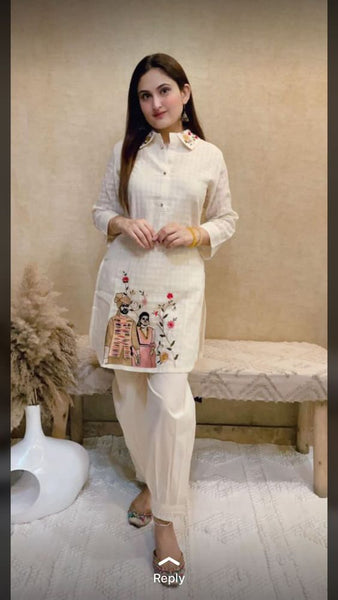
Cultural Significance of Embroidery
Embroidery holds deep cultural importance through traditions connecting symbolic patterns to regional heritage. Chinese phoenix and dragon motifs symbolise collective wishes for good fortune and prosperity. Ancient Peruvian textile arts integrated tiny embroidered figures, believing they held mystical powers. Unique, vibrant aesthetic markers differentiate folk embroideries like the molas of Panama versus the Kashmiri crewel work versus the Hungarian redwork.
Intricate patterns carrying ancestral meanings get passed down generations through time-intensive handiwork reviving memories of the past. Embracing traditional handcrafted textile arts supports community pride and women artisans' skills and sustains localised craft industries that form a cultural identity.
Custom embroideries even facilitate self-expression of identity; the Hmong diaspora's story cloths convey experiences through vibrant threaded narratives. Integrating this diverse living heritage into modern contexts through fashion allows embroidery to resonate with contemporary culture as well.
FAQs on Embroidery Fabric
1. What is the oldest embroidery in the world?
Ans: The oldest embroidery fragments ever discovered come from Pavlovsky Dol in Russia, dated to nearly 30,000 years ago, around the Ice Age. Archaeologists uncovered remnants of animal bone needlework on fur pelts and ivory flowers in geometric patterns embroidered onto leather.
2. Who invented embroidery in India?
Ans: While ancient origins remain obscure, the refined indigenous embroidery of India predominantly developed under the patronage of Mughal nobility during the 16th and 17th centuries. Princess Noor Jahan, Empress Nur Jahan and other royalty-supported specialised ateliers excelled at techniques like chikan, an Agra speciality, and zardozi metal embroidery.
3. What is the most expensive Indian embroidery?
Ans: Currently, Zardozi is considered the most expensive and exclusive hand embroidery style perfected for opulent bridal fineries, royal court costumes and textiles. The labour-intensive technique incorporates fine metal wires or sheets enveloped in silk or metallic threads to create lavish three-dimensional patterns in gold and silver.
4. What fabric is best for embroidery?
Ans: Even weave fabrics like linen and cotton and cotton blends make excellent bases, allowing needles to pass through evenly. Tightly woven poplin provides durability for frequent-use embroidered items. Stretchy jersey knits suit freeform embroidery. Almost any material can be decorated through embroidery for personalised flair.
 Call Us
Call Us



